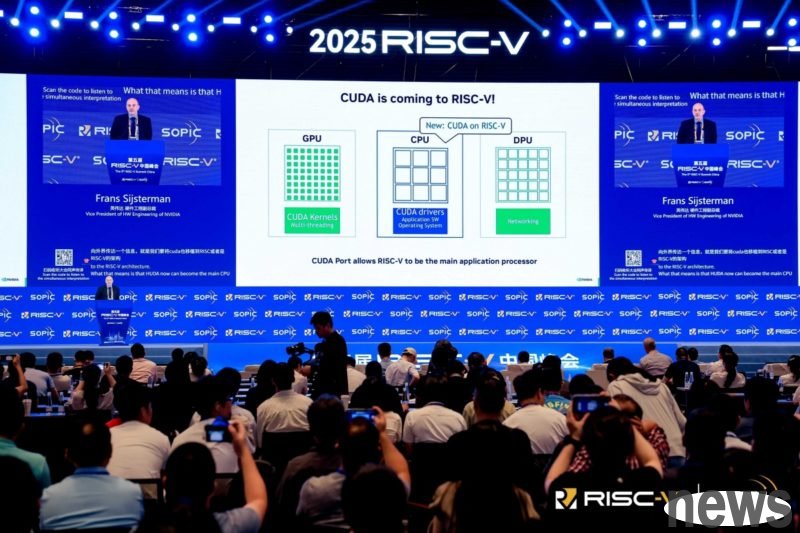NVIDIA Vice President of Hardware Engineering Frans Sijstermans announced at the 2025 China RISC-V Summit that the CUDA software platform will support RISC-V instruction set architecture processors to open the door to the data center and AI market f...

NVIDIA Vice President of Hardware Engineering Frans Sijstermans announced at the 2025 China RISC-V Summit that the CUDA software platform will support RISC-V instruction set architecture processors to open the door to the data center and AI market for the source architecture RISC-V.
For a long time, x86 and Arm architecture have been dominant in the AI and HPC fields due to its high integration with CUDA. For example, Intel and AMD processors with x86 architecture are the main force in the data center, NVIDIA also uses Jetson modules and Grace CPUs to deeply integrate the Arm architecture. REFERENCE Although RISC-V has source and scalable advantages, it is difficult to enter mainstream applications due to the lack of key tools such as CUDA. This support tag NVIDIA expands its ecosystem to the source field, which is expected to enhance the application potential of RISC-V in high-level computing.
The three mainstream processor architectures have their own characteristics. The x86 architecture has mature software support and large-scale ecosystem, but the cost and authorization model are limited. Arm focuses on low power consumption and scalability. Although it is competitive, in addition to its high authorization, it also hides risks. In contrast, RISC-V is a source structure, and enterprises can freely design and master technical guidance, so it is favored by many countries and new entrepreneurial enterprises, especially in the Chinese market, which is more of a key path to realizing chip autonomy.
For China, RISC-V combined with CUDA support means that it is expected to increase the key gap in past AI training and recommendation of basic facilities. NVIDIA recently reopened the H20 accelerator sold in China, which is expected to be used with RISC-V, and combines a medium-level GPU through the open-source CPU to create a local AI computing architecture with autonomy and flexibility.
It should be noted that although CUDA supports RISC-V, its nature is still a special software for NVIDIA, and actual integration still needs to face variables such as authorization, drive compatibility and ground policy. If the US government further tightens export restrictions in the future, NVIDIA can still suspend support for specific markets.
Although RISC-V is still difficult to shake x86's dominant position in data centers in the short term, with CUDA's open support for RISC-V, Arm may also see it as potential threats, especially after the application has expanded to AI edge computing, which will impact its existing advantages.
Nvidia extends CUDA support to RISC-V just in time for next wave of Chinese CPUs Nvidia’s CUDA platform now supports RISC-V — support brings open source instruction set to AI platforms, joining x86 and Arm